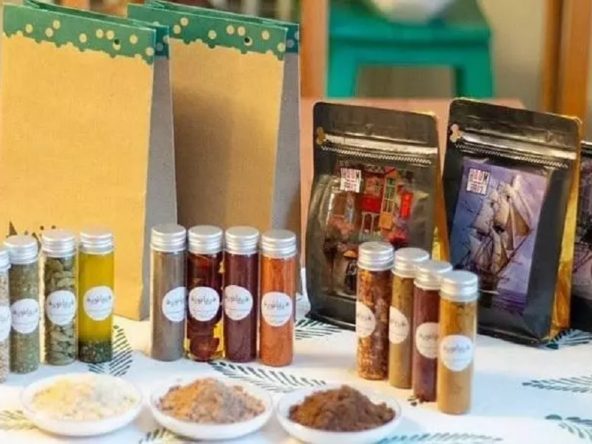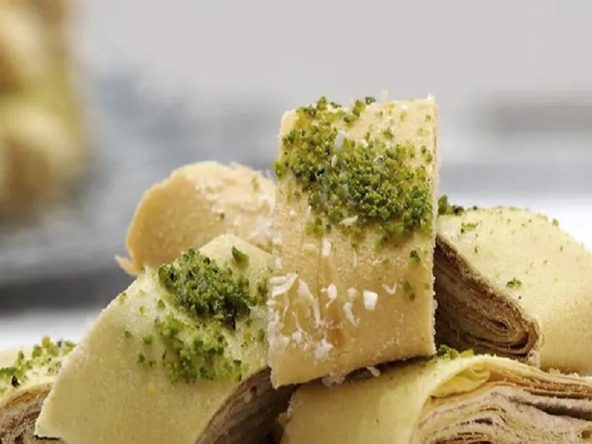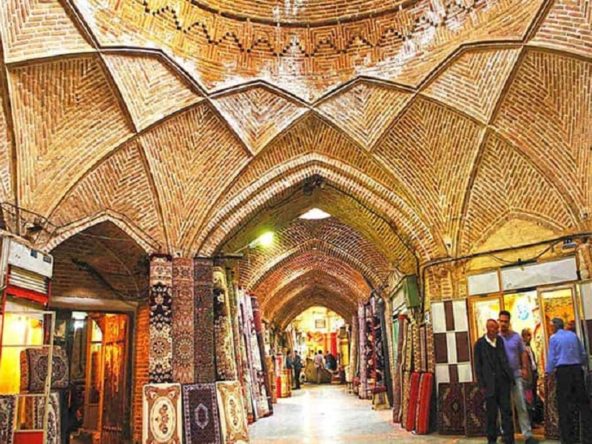Gilan Offers Numerous Souvenirs to Tourists
One of the attractive parts of traveling to different cities is buying souvenirs. When you plan to buy souvenirs from a city, you can learn more about the culture, customs, traditions, etc. of each city and get interesting information in these areas. Gilan is one of the most popular provinces in terms of tourism in Iran, and every year many tourists from all over Iran and the world choose it as their destination. The souvenirs of this province are very famous and well-known and include all kinds of handicrafts such as mat weaving and felt to local bread and sweets. In this article, we are going to introduce the Gilan souvenirs.
Edible souvenirs of Gilan
A large part of Gilan souvenirs are Gilani foods and dishes. Many Iranians and foreigners go to this province to buy Gilani food. Although some souvenirs of Gilan, such as dry string and Fomeni cookies, can be found in most cities of Iran, you cannot eat a hot and delicious Fomeni cookie anywhere except Gilan. The homemade Gilani noodles have an original and delightful taste that you cannot find anywhere else. In the following, we will describe the edible souvenirs of Gilan.
Gilan’s Reshteh Khoshkar
Reshteh Khoshkar (meaning sweet noodles) is a traditional Gilan pastry and has a long history, and in some regions, cooking is a family job. The main ingredients of this sweet are milk, rice flour, walnut kernels, cardamom, cinnamon, and sugar. There is a special tool known as the Khoshkar comb to prepare the noodles of this pastry. This comb is a brass funnel that has 6 narrow and regular tubes. A copper tray is also used for frying noodles, and the higher the purity, the more effective it is in the quality of sweets. There are several stages of cooking noodles: preparing the noodles, placing dry ingredients (internal contents including cardamom and chopped walnuts) on the noodles, frying, and putting them in a syrup made from water and sugar with cinnamon.

This fatty and very sweet dessert, which is usually consumed with tea, can be purchased in two ways: hot and ready to use, and in raw form, meaning the noodles that have been filled inside. If you buy raw Reshteh Khoshkar, you have to do the frying and floating in syrup at home.
Gilan’s Jasmine Baklava
Baklava is a type of pastry that is made from milk and egg yolk and has a middle layer made of chopped nuts such as walnuts, almonds, and pistachios, natural flavorings, and powdered sugar. After baking, this type of sweet is dipped in a special syrup.
In Gilan province, due to the abundance of jasmine flowers, unlike the common baklava in which the core is flavored with cardamom, the almonds used in baklava are flavored with jasmine (Yaas in Persian) flowers. After the peeled almonds are well dried, they put them in a container with a lid and put some jasmine flowers in it. The next day, the wilted jasmine is replaced with fresh flowers. This process continues until the almonds smell jasmine. Aromatic almonds are used in baklava together with powdered sugar.
Quince Halva
Quince (Beh in Persian) Halva is a local Halva of Gilan province, which is popular among travelers. The high-quality type of this Halva, which village women cook in whitened copper pots, is very colorful. To prepare this Halva, first, some peeled and chopped quince is cooked with water and some sugar until the water is completely absorbed. Then they pound the cooked quinces and fry them with sugar and animal oil. At the end of roasting, almond slices, and pounded cardamom are also mixed. When the Halva becomes a cohesive mass and is separated from the container, it is spread, decorated with pistachio powder, and cut into rhombuses.

Kholfeh Bread
Baking Kholfeh bread for the Sizdah Be Dar day (after Nowruz) is customary in many areas of Gilan province. The dough of this bread is prepared using cooked pumpkin, a mixture of wheat flour and rice flour, purslane seed powder, and some salt, and it needs a lot of kneading to prepare. This local bread is baked on Gomach. Gomach is a kind of clay pot that is placed upside down on the fire and bread is baked on the back of it.
Tamijan Bread
Tamijan Bread is one of the traditional breads and souvenirs of Gilan, which is named after its origin, the historical village of Tamijan in Rudsar district. The dough of this bread, which has a special method of preparation, is prepared from rice flour. Tamijan bread is oval and thin and is cooked on a cast iron pan called Sach. Baking this bread is more common in rural areas of the province on some special days. It is cooked on Eid days to entertain guests and is usually eaten with Arde Halva. This sweet local bread is offered in the weekly markets of different cities of the province.
Siah-Mezgi Cheese
Siah-Mezgi cheese is one of the favorite dairy products of the people of Gilan, which is also welcomed by travelers and tourists. This yellow, high-fat cheese is unique in terms of taste among the types of cheeses produced in Iran and competes with the best cheeses in France. To prepare this cheese, they use freshly milked sheep’s milk that is still warm and the cream has not been removed.

Another step in the production of this cheese, which plays an important role in its quality and taste, is processing it in sheep skin. The production of Siah-Mezgi cheese in the traditional way is popular in the Siah-Mezgi area of Shaft County, Gilan Province, and livestock farmers usually produce this cheese in the second half of the year. In this type of cheese, the longer it is produced, the better its quality is. And for this reason, old cheese is more expensive than fresh cheese. Siah-Mezgi cheese, in addition to being available in the producing areas, is also sold in the weekly markets of other cities of the province.
Gilan Handicrafts Souvenirs
Gilan province also has a high diversity in the field of handicrafts and indigenous crafts, products that show the rich culture and civilization of this land from thousands of years ago. Pearl weaving, mat weaving, thread embroidery, local clothing, turning, tent weaving, pottery, carpentry, wood carving, inlaying wood, house enamel, and Jajim are some of the most famous handicrafts of Gilan. In the following, we introduce the types of Gilan handicrafts souvenirs.
Gilan Mat Weaving
Wicker or mat weaving is one of the common handicrafts in Gilan and can be seen in most cities of this province, especially in Bandar Anzali, Khomam, Jafaroud, Ghazian, Golshan, and surrounding villages. The basic material of this beautiful art is De Winter Stipagrostis pennata. It is a plant that grows around marshes or small reservoirs and weaving it in non-agricultural seasons is considered a suitable alternative for farmers and rural landowners.

Among the wicker products, we can mention fruit and bread baskets, mats, colanders, mats, wicker tablecloths, wicker hats, wicker fans, baskets, wicker baby cribs, etc. These products are mostly woven by the hands of women in this region.
Gilan Bamboo Weaving
Bamboo weaving is one of the old handicrafts and souvenirs in Gilan province, which is as old as tea cultivation in this region. Bamboo or bamboo reed, De Winter Stipagrostis pennata, mostly grows around ponds and wetlands, and the main center of its production is in Lahijan, especially the village of Lialestan. It is more flexible than De Winter Stipagrostis pennata, and because of this, more diverse and delicate products can be produced with it.
Gilan Knitting and Crocheting Souvenirs
Large knitted and crocheted shawls and scarves are the traditional clothing of the Gilan people and are known as one of the popular souvenirs of the Gilan province. Shawl weaving is one of the handicrafts of Gilan and its primary material is animal wool. Gilani shawls are woven by a shawl weaving machine with a horizontal loom.
Cotton is not used in the weave of shawls. Gilani shawls are impervious to cold and moisture, and for this reason, people in mountainous areas, high areas and summer cottages use them more. Shawl weaving is also common in other provinces of the country, including Kurdistan.

Designs and carvings of crochet work in Gilan province are usually born from the imagination of their weavers. These motifs have been passed down from generation to generation and among the most popular of them, we can mention the old motifs, checkered, paisley, and circle. Gilan crochet is divided into three groups:
- Crocheting fabric with colored silk thread: In this method, crocheting is done after drawing the pattern
- Crocheting with patchwork method: In this method, after the artist draws the patterns of the mahout weave, a certain part is separated and replaced with a piece of another color. Then the artist continues crocheting
- Crochet combined with Maragh method: This method is the most complicated method of Gilan crochet. In this method, the artist places pieces of colored mahout on the main fabric and connects their edges with crochet. Among the products of this beautiful art, we can mention tablecloths, fabrics, bed linens, cushions, bags, suitcases, and floor coverings
Gilan Woolen Handwoven Souvenirs
Animal husbandry is common in some areas of Gilan province, and high-quality wool is one of the products of these areas. The people of this province turn wool into yarn with spinning machines, and after dyeing, they are used in the weaving of woolen clothes such as socks, gloves, scarves, and blouses. Masuleh, Rasht, and Anzali are among the production centers of these Gilan woolen handwoven souvenirs.

Charoq and Chamush Duzi
Chamush or Charoq, is a type of shoe without heel, which is widely used in Gilan province, especially in the highlands and mountainous areas. This special shoe is made with tanned cow skin, and one of its unique features is not using glue and nails. The production of this shoe is done only with the art of sewing. Hammers, cutting devices, leather spindles, needles, and wooden mold are among the tools for making Chamush.
Chamush is a special shoe that warms the foot in the cold and cools the foot in the heat. Another type of Chamush is without straps. This beautiful art has been registered in the list of national heritage of Iran. Chamushes are usually produced simply and without color and are dyed with natural dyes such as pomegranate skin. They are embroidered and decorated with yellow, green, and red threads at the end.
Gilani men’s Chamuches are usually made with buffalo leather and women’s Chamuches with goat leather. You can find Chamushes in a variety of colors such as green, white, off-white, brown, and red. It is interesting to know that Chamush does not have a left or right foot.
Gilan Night-Tent Weaving
Night-Tent (Chador Shab in Persian) is a colorful cloth, usually with a checkered pattern or single color, which is woven with a special machine. The fibers used in this special fabric are usually silk, wool, or cotton. Nowadays, synthetic yarn is also used. The people of Gilan province, especially the women of this region, use the night tent as a waist wrap to prevent the penetration of moisture into the body while working in the paddy field. In the past, the people of Gilan used to give the night tent as a gift to the brides.

The background color of the night tent is usually red, but purple and green colors are also seen in very small quantities. The motifs worked on the night tent are geometric and white, green, orange, yellow, pink, blue, and red colors are used in harmonious combinations.
Rashti Douzi
Rashti embroidery (Rashti Douzi in Persian), thread embroidery, or flower embroidery is one of the special handicrafts of Gilan province, which dazzles the eyes of every viewer. Artists create very beautiful designs by using colored silk threads and hooks to produce Rashti embroidered works on thick fabrics made of mahout material. Rashti embroidery is sewn with three different methods (simple embroidery, thick embroidery, and patchwork embroidery) by a device called a hook. The most common designs of Rashti embroidery include flowers, deer antlers, and chickens. Rashti Embroidery is mostly seen in all kinds of clothes such as trousers of warriors, armbands, cushions, tablecloths, etc.
According to the discovered crocheted works in Loulman, Gilan, researchers believe that Rashti embroidery dates back to 320 to 550 centuries BC (Achaemenid period). It was also very popular during the rule of Afsharians and Zandians. At the end of the Qajar period, it gradually became a product that could be used by all sections of society.

Gilan Felt Making
Felt making is one of the original handicrafts and souvenirs of Gilan that can be seen in most villages and settlements along the Caspian Sea. Felt is produced from a wool that consists of long fibers. Felt-making has a long history in Gilan province and its artists use a mixture of soap and egg yolk to improve the quality of their felts. Felt-making does not require a special device, and its products were usually used as hats, clothes, and underlays in the past. Currently, felt-making products do not have their former use and have become decorative.
Gilan Pottery
The art of pottery which dates back to thousands of years can be seen in every corner of Iran. It is one of the oldest human creations, and the people of Gilan province have been engaged in the art of pottery since ancient times. So many pottery works belonging to the Iron Age have been discovered in Marlik and Amlash in Gilan province. According to the local dialect of Gilani, the word Sofal (Persian equivalent for clay) means clay that has caught fire.
In addition to producing all kinds of dishes, vases, etc., the art of pottery is also used in the architecture of Gilan houses. When traveling to this green province, pay special attention to the village houses and gable roofs to see the pottery. Clay prevents the penetration of rain in the rainy season.

Gilan Wood Turning and Wood Joinery
Woodturning and wood joinery is one of the common handicrafts in Gilan province, especially in Rasht city. A large number of wood craftsmen in numerous workshops in this province produce all kinds of wooden items such as chocolate containers, sugar bowls, fruit bowls, salt shakers, nut bowls, clothespins, etc.
The List of Gilan Souvenirs Is Endless!
Like other Iranian cities, Gilan province has many souvenirs. Choosing a souvenir among all these delicious foods and various handicrafts is a difficult task for tourists. Most tourists buy edible souvenirs of Gilan, while others like to have a lasting object as a souvenir or to give a special gift to their friends and acquaintances. In any case, you can buy the souvenir you want in Gilan.







